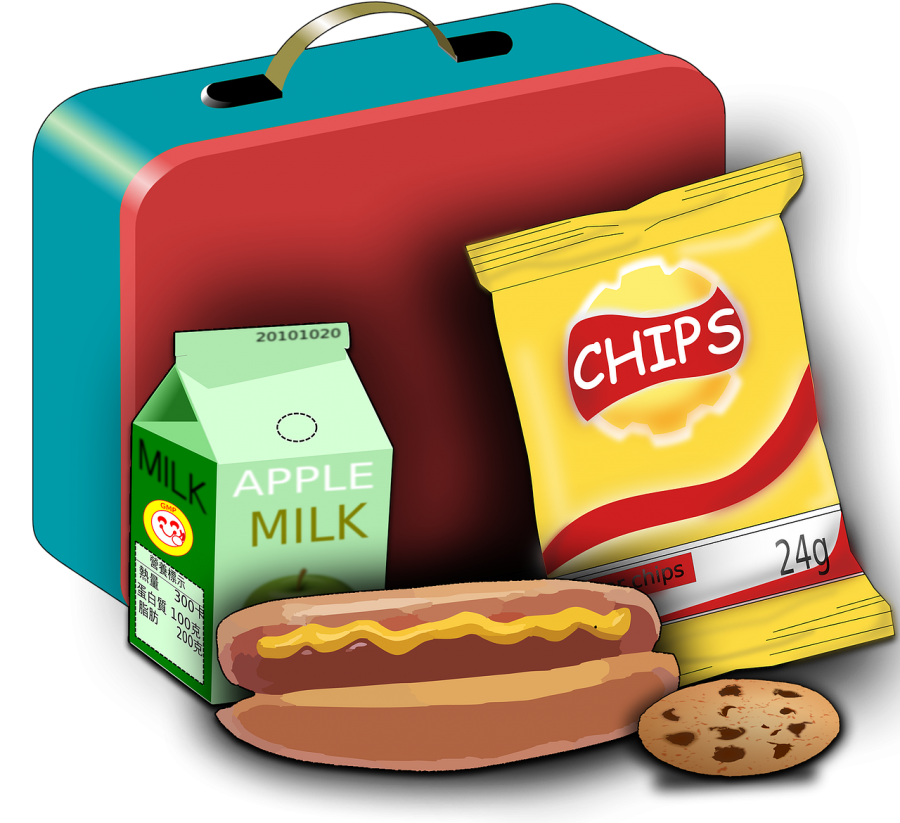Mealtime Madness
https://pixabay.com/images/id-1375317/
November 23, 2020
As you may have noticed, Helena High has further reduced the time allotted for students’ lunch break from a measly 35 minutes, all the way down to, if you can believe it, a pathetic 20. The problems with this ridiculous reduction span further than just being an inconvenience, and much further than the school board seems to realize.
Many people often overlook the concept of a meal and shrug it off as simply something that we do. We eat to survive, and that is that. However, mealtime is much more complex than that, and not handling it properly can drastically effect day to day life. And unfortunately, the school is rendering its students unable to handle the mid-day meal as properly as they need to.
As we all know, food, more specifically calories, is what gives our body the energy necessary to survive and complete normal daily functions. Without the proper supply of calories needed to do so, the body cannot achieve what it needs to to stay healthy. In the fast-paced life, we live in, meals are often casualties to the hustle and bustle of everyday tasks making it difficult to fulfill bodily requirements in a healthy manner.
Eatright.org says that on average, a teenage male needs roughly 2,800 calories in a single day to stay healthy, and teenage females need about 2,200. Operating in a drastic calorie deficit, or less than this can have detrimental effects on the body, mind, and emotions of a growing/developing child. Effects such as fatigue, irritability, extreme weight loss, depression, loss of adequate cognitive function, inability to keep body heat, dizziness, and many more can all potentially stem from not reaching this calorie requirement on a regular basis.
By not supplying children, specifically teenagers, with the time necessary to meet these needs, the physical, mental, and emotional wellbeing of students may be at risk. And with the extremely limited time given to students, this may prove likely to happen. While some may be able to consume this amount of energy in a short time span, it’s arguably impossible to do so in a healthy manner. With limited time, students are forced either to go without lunch or to rush to get through it, both unhealthy habits.
Lunchtime, while not often considered or thought of being quite as important as breakfast or dinner, is still an immensely important meal that has many benefits. In fact, according to GPB.org, the blood sugar boost achieved by eating lunch can improve focus throughout the rest of the day. Lunch also offers a boost of vitamins and minerals halfway in between meals that keep bodily and mental function where it needs to be. Skipping lunch may become regular for kids and that is very unhealthy.
As for the kids who have to rush through the meal, that may be just as bad. Not chewing food properly can lead to a number of digestive problems and choking hazards. WebMD informs us that chewing is the first step of digestion, so inadequate chewing can lead to gastrointestinal issues. Saga.co.uk preaches that chewing properly can not only reduce choking risks, but also help maintain healthy weight, improve digestion, help with proper nutrient absorption, improve oral health, and help with mindful eating and living.
A reasonable argument could be made that lunch should be the most nutrient dense meal of the day seeing as how it’s the period that most of us are most active, so it seems equally as reasonable to make an argument in favor of extending the time allotted to eat to see to it that our bodies get what they need properly. A 45-minute lunch break seems more than fair because it would give students adequate time to eat and begin digestion.
Proper eating habits are nearly impossible with such a limited time for a meal, and this needs to be changed. The students at Helena High School are missing out on more than our beloved social experiences during lunch with such a limited time. We are also missing out on health benefits and potential mental, physical, and emotional improvements. If nothing can be changed or improved upon, it’s at least necessary to know the true effects of what’s going on.


